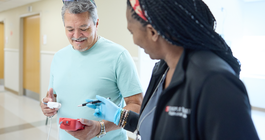
October 23, 2019
From bug bites to cuts and scrapes, minor injuries are bound to happen when you’re on the go outdoors. Having a first-aid kit ready for when you need it should always be a priority as you prepare for outdoor fun.
Follow these three simple tips to help you stock the perfect first-aid kit:
Use this first-aid kit list as a guide when preparing for emergencies:
• Antiseptic wipes
• Antibiotic ointment
• Sterile gauze pads
• Adhesive tape
• Hand sanitizer
• Sterile eye wash
• Latex gloves
• Instant cold pack
• Safety pins
• Thermometer
• Seasonal items (i.e., Bug spray, sunscreen, ice scraper)
• Eye shield or pad
• Blanket
• Lists of emergency phone numbers
• Flashlight
• Matches
• Pen and paper
• Whistle
If you’re on the go, make sure you can find doctors, retail clinics, and urgent care centers wherever you are. Download the free IBX app for iPhone and Android devices. It also gives you access to your health info and medications if you’re an IBX member, so that’s one less thing to pack in your kit! And don’t forget, you should always carry your health insurance ID card in your wallet – just as you would your driver’s license or credit cards.
This article was originally published on IBX Insights.
Does writing count as exercise? Then my fingers are in great shape! As a senior copywriter at IBX, I've learned a lot about how health insurance works and how it can help me stay healthy. My goal is to share this knowledge with others in a fun and engaging way.